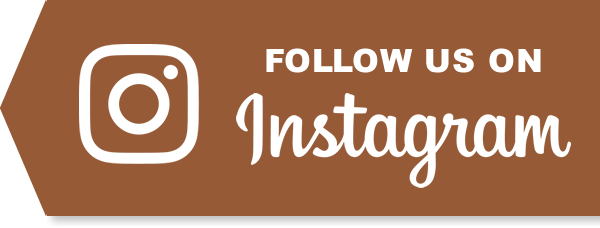Contact Information:
Published Content
Exploring the diverse world of fashion careers
Fashion is an ever-evolving industry, constantly influenced by cultural trends, technological advancements, and societal changes. It is a vibrant field that attracts creative minds, strategic thinkers, and innovative problem solvers. While many people think of fashion in terms of designers and models, the industry offers a myriad of other roles that are equally exciting and vital. In this article, we will explore the different types of fashion jobs available, shedding light on what each role entails and the skills required to succeed.
1. Fashion designer
When one thinks of fashion, the image of a designer sketching away at a piece of clothing often comes to mind. Fashion designers are at the heart of the industry, responsible for creating the concepts and designs for garments and accessories. They must possess a deep understanding of textiles, colours, and trends, as well as a keen eye for detail. Fashion designers often specialise in specific areas such as haute couture, ready-to-wear, or accessories.
Designers need to have a combination of creativity and technical skills. They must be able to communicate their ideas through sketches and digital designs and understand the construction of garments to bring their visions to life. Most designers have a formal education in fashion design, although talent and experience can sometimes outweigh academic credentials.
2. Fashion stylist
Fashion stylists are the unsung heroes behind many of the iconic looks seen in magazines, advertisements, and on the red carpet. They work closely with photographers, models, designers, and clients to create visually appealing outfits that tell a story or convey a particular mood. Stylists must have a thorough understanding of fashion history, trends, and body types to curate looks that enhance the wearer's appearance.
A successful fashion stylist needs to be resourceful, organised, and possess excellent interpersonal skills. They must stay up-to-date with the latest fashion trends and be able to adapt to different styles and preferences. Stylists can work in various settings, including editorial styling for magazines, personal styling for private clients, and commercial styling for advertisements and television.
3. Fashion buyer
Fashion buyers play a crucial role in retail. They are responsible for selecting the products that will be sold in stores or online. This job requires a strong sense of trend forecasting, as well as an understanding of what consumers want and need. Buyers must analyse past sales data, attend fashion shows and trade fairs, and negotiate with suppliers to ensure their store or brand stocks the best products at the right price.
To succeed as a fashion buyer, one must have strong analytical skills, a good eye for detail, and excellent negotiation abilities. It is also important for buyers to build and maintain strong relationships with vendors and suppliers. Many buyers start their careers as merchandising assistants or in entry-level retail positions and work their way up.
4. Fashion illustrator
Fashion illustrators are artists who create visual representations of clothing designs. These illustrations can be used for promotional purposes, in fashion magazines, or as a means for designers to visualise their creations before they are made. Illustrators need to have strong drawing skills, an understanding of fashion design principles, and the ability to capture the essence of a garment or accessory.
This role requires creativity, artistic talent, and an understanding of current fashion trends. Many fashion illustrators work on a freelance basis, creating illustrations for various clients, while others may be employed by design houses or fashion magazines.
5. Fashion merchandiser
Fashion merchandisers are responsible for ensuring that the right products are available in stores at the right time and that they are presented in an appealing way to attract customers. They analyse market trends, coordinate with fashion buyers, and plan product ranges. Merchandisers must also work closely with the marketing team to create promotions and campaigns that will maximise sales.
A career in fashion merchandising requires strong analytical skills, an understanding of consumer behaviour, and an ability to forecast trends. It is also important to have good organisational skills and the ability to work under pressure. Many merchandisers have a background in business, marketing, or fashion.
6. Fashion journalist
Fashion journalists write about fashion for magazines, newspapers, websites, and blogs. They report on fashion trends, attend runway shows, and interview designers, stylists, and models. This role requires a keen eye for detail, excellent writing skills, and a deep understanding of the fashion industry.
To become a fashion journalist, one usually needs a degree in journalism or a related field. It is also beneficial to have a portfolio of writing samples and experience in the fashion industry. Fashion journalists must be able to work to tight deadlines and have a passion for staying up-to-date with the latest fashion news.
7. Fashion PR specialist
Fashion public relations (PR) specialists are responsible for managing the public image of fashion brands and designers. They work to build and maintain relationships with the media, organise events and press releases, and handle any public crises that may arise. A PR specialist must be an excellent communicator, both written and verbally, and have a strong network within the fashion industry.
A background in public relations, marketing, or communications is often required for this role. PR specialists must be able to think strategically, handle stressful situations calmly, and possess a deep understanding of the fashion industry and its trends.
8. Fashion photographer
Fashion photographers capture the essence of clothing and accessories through their lens. They work with models, stylists, and designers to create compelling images that are used in advertising, magazines, and online platforms. A successful fashion photographer must have a strong understanding of lighting, composition, and the technical aspects of photography.
Fashion photographers need to be creative, detail-oriented, and able to work in fast-paced environments. Many photographers start as assistants to established professionals, learning the ropes before striking out on their own.
9. Fashion marketer
Fashion marketers are responsible for promoting fashion brands and products to consumers. They develop marketing strategies, create advertising campaigns, and analyse consumer behaviour to maximise sales. Marketers need to be creative, strategic thinkers with a strong understanding of branding and market trends.
A career in fashion marketing often requires a degree in marketing, business, or a related field. It is also important to have excellent communication skills and the ability to work well under pressure.
Conclusion
The fashion industry is a dynamic field that offers a wide range of career opportunities for those with a passion for style and creativity. Whether you are interested in design, marketing, journalism, or photography, there is a place for you in the world of fashion. Understanding the different roles available can help you find your niche and build a successful career in this exciting industry.
Published Content
See all listings from Published Content
Newsletter
To sign up up for www.glos.info weekly newsletter, please click here.
Please mention www.glos.info when contacting this advertiser.









